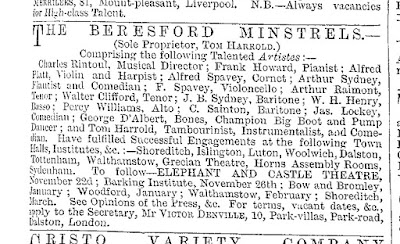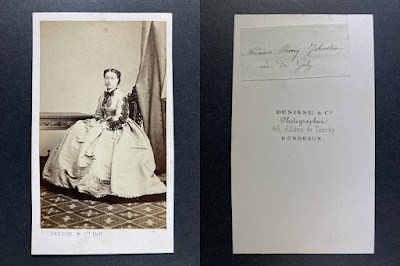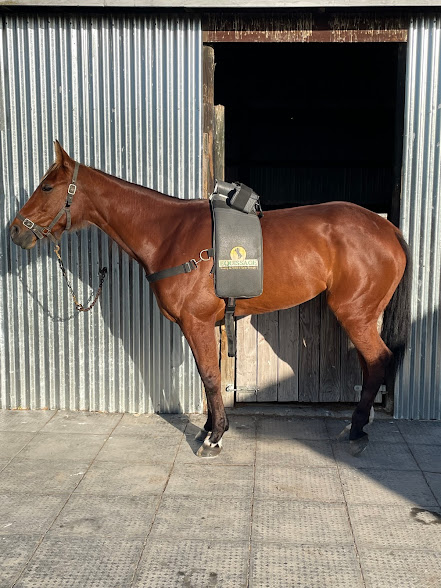CLIFFORD, Walter [WEBLING, Walter] aka WEBLYN, Walter [Clifford] (b Peckham 18 April 1846; d Romford September 1928).
A competent baritone singer of the jolly kind, who led a double life -- in more ways than one – and, for heaven’s sake, found his way into Brown and Stratton’s dubious tome of musical biography.
Mind you, I don’t blame them for being somewhat dubious this time. Walter told enough lies in his life to confuse anyone. I’ve tried to unravel them, as follows.
Once upon a time, there was a coachman (late a cow keeper, later a grocer) name Robert Webling (1801-1891), who lived in the Peckham High Street with his wife Elizabeth (née Phillips) and a bundle of children. One of the later ones was christened Walter. We see young Walter in the 1861 census, working as a warehouseman, but, by 1869, he is jeweller, with premises at 8 Pall Mall, no less, trading as Metcalf[e] and Co. He got into several lawsuits (always as plaintiff or witness) at this time, so we can pinpoint him.
In 1871 (24 January), he married Jessie Margaret Hall, a silversmith’s daughter from Manchester (and Anglesea) and, according to his own account, thus had plenty of free time to devote to singing.
He and B&S both say that he debuted in 1879, but that is way out. He was one of those chaps who just sang. Although he took lessons for a while from Edwin Holland. But I see him, already, in 1874, singing in the suburbs with a group called the Beresford Minstrels. Under the name of Walter Clifford. As a tenor!
Now this was a most inconvenient name (for me) for him to choose. There was Walter Clifford the actor, two or three of them in fact, Walter Clifford the comic singer who got had up for fraud, there was Sir Walter Clifford and the Rev Walter Clifford … he might as well have called himself ‘Walter de Clifford’, which I imagine is where the idea came from.
He performed a reasonable bit in public in an amateur, or semi-pro, way before 1879: but, more importantly, he gave up jewellry. In 1876 he bought a new and failing newspaper, The Illustrated Sporting and Dramatic News. And he turned it around most thoroughly. So Mr Walter Webling (elided now, more fashionably, into ‘Weblyn’, at some stage in the early 1880s) was, henceforth, a newspaperman in the daytime, and a baritone in more relaxing moments.
He turns up singing at the Aquarium concerts in 1876, and, in 1878, at the St James’s Hall Burns Night Concert. For some reason, he specialised in Scots songs (‘Bonny Mary’, ‘Bonnie Dundee’, ‘Gae bring
to me a pint o’ wine’, ‘The de’ils awa wi’ the excise man’), and this concert would become an annual engagement for more than a decade, not hindered by the fact that he latterly became involved in its management.
He sang at various charity concerts, at Holland’s concert, and at the concert of composer Nicola Ferri, who became a close friend and whose songs he plugged loyally (‘Polly and Jo’, ‘Gladys’, ‘From thy lattice’). At a training ship benefit, he got to sing ‘All’s Well’ with Edward Lloyd and introduced a new song, hallowing ‘Our Lads in Blue’.
In 1878, as well, he appeared for the first time at the Covent Garden proms, another engagement which would become a regular one, for a decade. The press was sanguine: ‘Mr Clifford ought to make his way as a vocalist, for he has power and compass sufficient to enable him to execute the most difficult and elaborate music written for baritone’. Of course, we don’t know how much of the review in question was for the singer, and how much for the owner and editor of the The Illustrated Sporting and Dramatic News.
I’m not going to detail the small and clubby concerts, the dramatic fund dos, dinners and benefits, where ‘Walter Clifford’ appeared. Those, the St James’s Hall national, Saturday and Easter concerts, and the promenade concerts, particularly the Covent Garden variety, became the staple of his career. He appeared, now with professionals, now with amateurs, and with a selection of various friends like-minded – F H Cowen, Cotsford Dick, Faulkner Leigh, Ferri, Ambrose Austin, Mrs Osborne Williams.
He took part in the first London showing of Cowen’s The Corsair (5 May 1880) with Marie Roze and Barton McGuckin, sang Robin Hood in The May Queen with Anna Williams and Frank Boyle at the proms, and made a first stage appearance, alongside Leigh and Dick, in an amateur production of HMS Pinafore. He later repeated the role of Corcoran at the Alexandra Palace with Alice Barth, Faulkner Leigh and Mrs Osborne Williams, and in Belfast. He ventured into opera at the Crystal Palace, in Der Freischütz and as Danny Mann in The Lily of Killarney, with Alice Barth’s company in Cox and Box (with Eric Lewis and Leigh), and later with Blanche Cole. He also reprised The May Queen, with Gertrude Cave-Ashton, and was praised for his ‘mellow baritone of extensive compass’ as well for his relaxed, bonhomous stage presence, which would lead him, in concert, to lean on the piano as he delivered ‘To Anthea’, ‘If doughty deeds my lady please’, ‘The Outpost’, ‘The Vicar of Bray’, the latest Ferri ballad, ‘I Fear No Foe’, ‘The Minstrel Boy’, ‘The Peace of the Valley’ and, occasionally, even a piece of opera, such as ‘Avant de quitter ces lieux’.
He played games, sometimes, with his ‘identity’: he turned up at a club do and was listed in the press, amongst the guests, as ‘Mr Walter Weblyn’, but when he got up to sing, he was ‘Walter Clifford’. The whole family took up the ‘Weblyn’ and when he visited Bangor and Beaumaris, where his wife and three daughters lived, Mrs Walter Weblyn appeared (‘sweet but not strong enough’) in concert alongside Mr Clifford.
 |
| Walter Webling. Somehow one knew he'd be moustachio-ed |
In 1885 and 1886, Mr Clifford made an appearance with the Carl Rosa Opera at Drury Lane, playing the part of de Bretigny in Manon ‘with easy grace’, but he had his day job, and he did not become a regular member of the troupe. On two occasions, he took the role of Careless in The School for Scandal for charity, and he created Sydney Shaw’s ambitious Gethsemane at St James Hall (26 November 1886), singing the Narrator alongside the Jesus of Ben Davies.
In 1887 he staged a concert of his own at Brixton Hall, and announced that he and Miss Florence Waud (pianist) would be doing a tour of 32 concerts from Chicago. The trip doesn’t seem to have happened, instead Walter paid out 2,000 gns for a Millais, to reproduce in his paper, and life and music went on as usual.
Or did it? Now comes a wee puzzle. A wee trap. Into which the amateur genealogists of the internet have fallen with a bang.
In the 1891 census Mr Walter C Weblyn, newspaper proprietor, born Camberwell, can be seen living at 127 Victoria St Westminster. We know it is he, because Lucia Diani Ferri, widow of friend Nicola, is there too. But there is also Florence E Weblyn, 26, born St George’s Hanover Square, wife. Wife? But Jessie is still flourishing in Beaumaris.
The trap is that there WAS a Florence Ellen Weblin (sic) (née Winckworth) who was, indeed, married to a Walter Weblin. But it wasn’t our man, committing bigamy with another subtle name change, it was a totally different hairdresser chappie from Lambeth, who had a bunch of children, went to Australia, lost his wife, got into regular trouble with the law and, finally, committed suicide. So their children don’t belong to our Walter. Right, o family historians?
Who is this Florence then? A bit off stuff? Florence Waud the pianist? Hmm, she’s Florence Mary. But she was born in St George’s. Or is she the young singer known as Florence Monteith ‘pupil of Henry Wylde, Rose Hersee and Franco Leoni’, with whom Walter sang regularly in the 1890s? Admittedly, there doesn’t seem to have been much contact with Jessie, who lived now at The Red House in East Molesey with the daughters, whom she married off splendidly. The youngest, Gladys (1879-1957, Mrs Kent), married the stroke of the Oxford boat race crew, and lived happily ever after for over fifty years. Kate Elizabeth (1871-1901, also Mrs Kent), married a solicitor, the brother of Gladys’s husband, but died young. Theodora Jessie (1875-1941), amateur actress and vocalist, married twice (Mrs Tattersall, Mrs Greenhill). And mother was there. Not father? Yet a book of memoirs by Hughes Hallett speaks of them as a couple …
So just who, precisely, are the Mr and Mrs Clifford Weblyn who are appearing in public later in 1891?
In May 1892, Walter created the role of Olynthus in George Fox’s opera Nydia and took a trip to Belgium, with Miss Monteith, for concerts in Brussels. Soon after, ‘Mr W Clifford Weblyn proprietor of The Illustrated Sporting and Dramatic News’ can be seen in the prospectus for ‘The Brussels Palace of Varieties’ along with Hutchinson, husband to Alwina Valleria. In 1894 and 1895, he can be seen singing at the Crystal Palace with Florence, and at St James’s Hall on Burns Night … again with Florence, and he was given a full-page article in the Daily Sketch… In 1896 he turns up brokering the rights of The Mikado to Italy, where Florence is making her Italian debut in Lohengrin … in 1897 he’s up in court … oh, oh! … Weblyn vs Weblyn. Is the marriage over? Oh. It’s ‘re: Weblyn’s Trusts’. In 1898, I see a reference to him as a shareholder in the Carl Rosa company, when the company is wound up.
But, while his daughter was driving her ten (or six, or twelve) horse-power Daimler to victory in the Ranelagh automobile championship, in the 20th century, Walter got a bit invisible. Funnily enough, Miss Monteith, who had been singing opera in Italy and Belgium, did too. But an anecdote about her hat catching fire, at Monaco, made the Australian papers in 1908.
There he is in a Benefit concert in October 1900, but where is he in the 1901 and 1911 censi? Has he given up his paper?
Well, it looks as if he may have popped overseas. I see a 1910 article from his pen about a trip to Jamaica. And there he is, sailing in from Kingston to Bristol 5 December 1909.
He comes back into the British documentary system in 1928, when he died at Romford. Jessie, who can be seen living at Lockerbie House, East Molesey, with a lady cousin, in the 1911 census, still labelled ‘married’, had predeceased him, dying at Cliffs and Norbreck Hydro, Blackpool on 23 July 1916.
Walter’s elder brother, jeweller Robert, was the father of writer ‘Peggy’ Webling. Peggy, Josephine and Rosalind Webling can be seen staging a dramatic matinée at Steinway Hall in May 1880 and another in Oxford in November. Another sister, Lucy, also took to the stage. Ethel was a portrait painter.
Postscriptum: Florence Monteith or Montieth? Yes, the interchangeable spelling again. Pseudonym. Surely, it couldn’t be too hard to suss her out. She once gave an interview to a magazine in which she confided she had been a star piano pupil of Henry Wylde’s London Academy. So, we pop back to the LAM prize concerts of 1887. The star pianist is Miss Florence Henderson, who was a gold medallist indeed, and who can be seen at the Brighton Pavilion, St George’s Hall as early as 1885; playing a Liszt concerto at a Hommage concert, and at the Crystal Palace, until she oddly disappears and Miss Monteith, singer, arrives. It’s not proof, but it looks likely. Miss Monteith is reported singing in Rome in 1902. And then at Naples, the Rome Costanzi, Lisbon, Monte Carlo … and … solved. Florence Monteith, singer, real name Florence Waud …. Gotcha my girl! You aren’t two Florences: you’re one! Born 23 September 1861, St George’s, daughter of Charles Kell Waud, dyer and bleacher and Annie née Ryan. Here she is ‘of 2 Carlton Vale, Maida Vale’ in 1922. Died, unmarried, London 1939 ... And here is a photo of Miss Waud on the cover of a London paper of 1882.
It is so obviously the same lady as the Miss Monteith pictured in 1898.
And what was the paper? Why, The Illustrated Sporting and Dramatic News! Gotcha! Thought: I wonder if she was Miss Henderson as well… and, of course, for a while, the de facto Mrs Weblyn?

















































